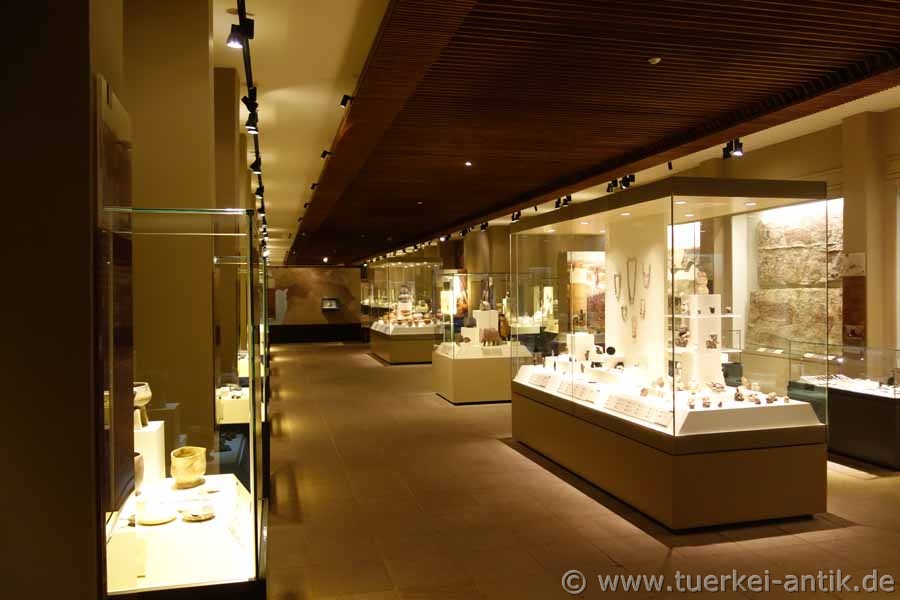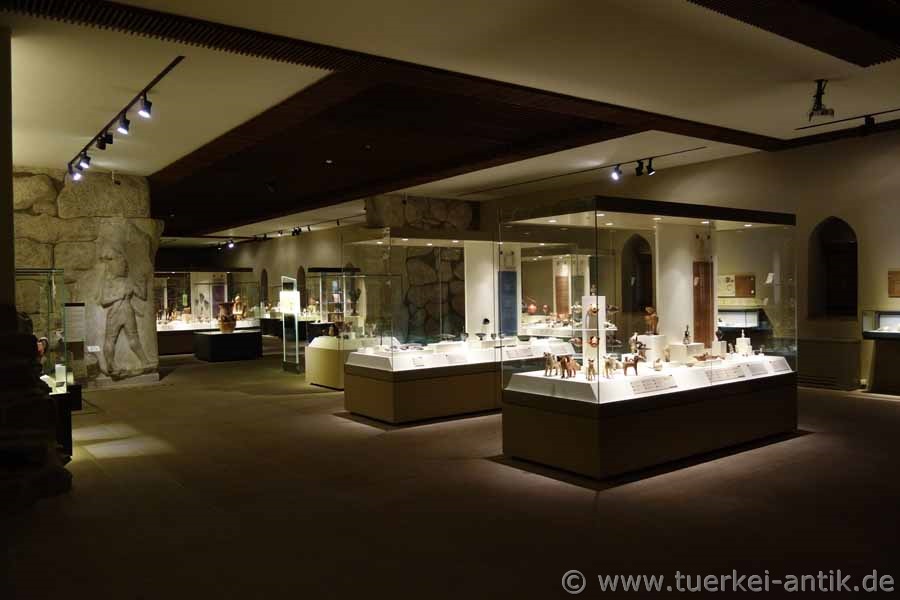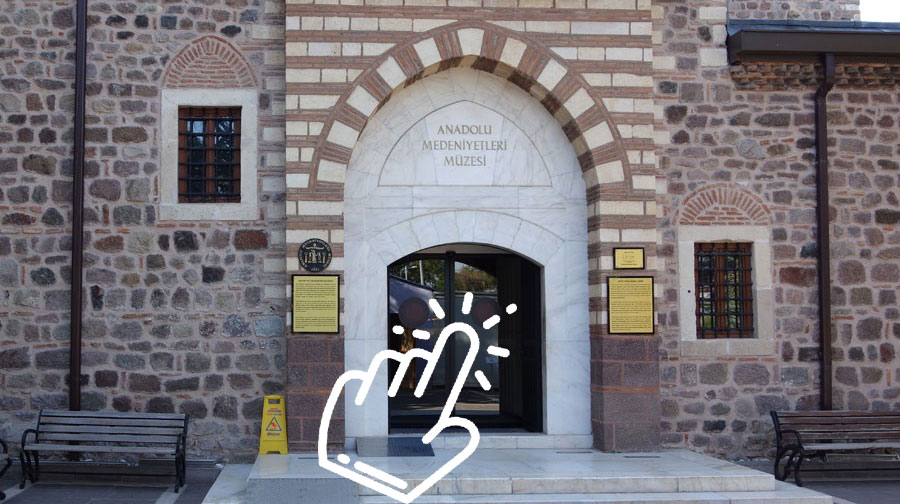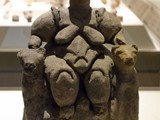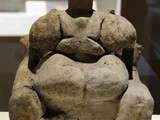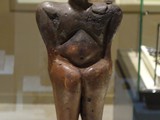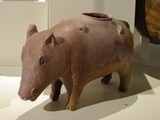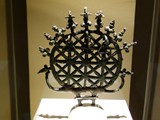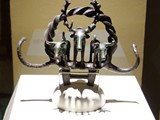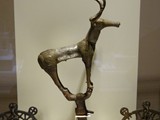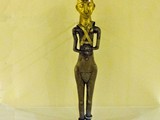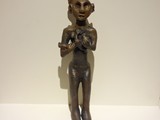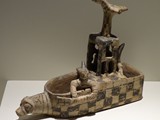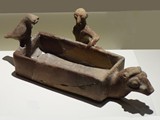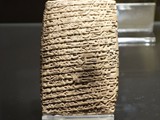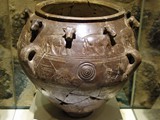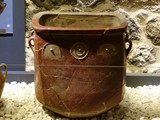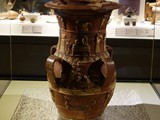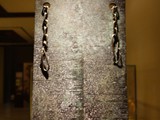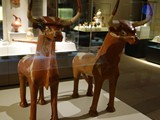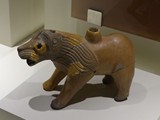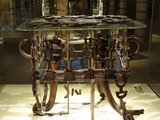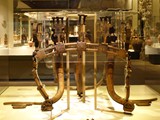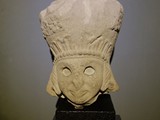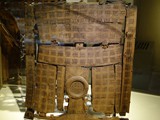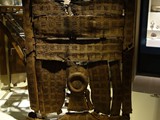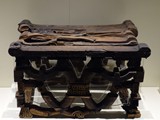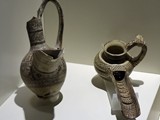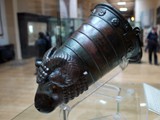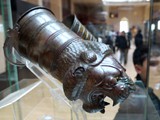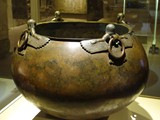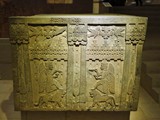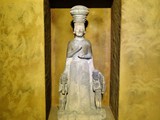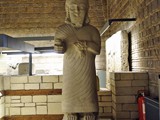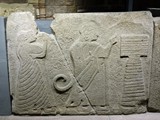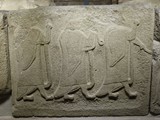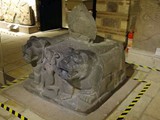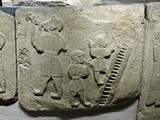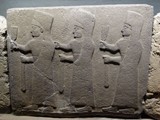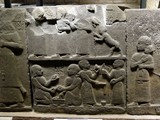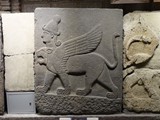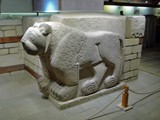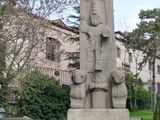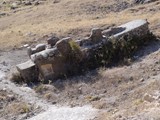 |
| Ankara, Museum of Anatolian Civilizations | |||
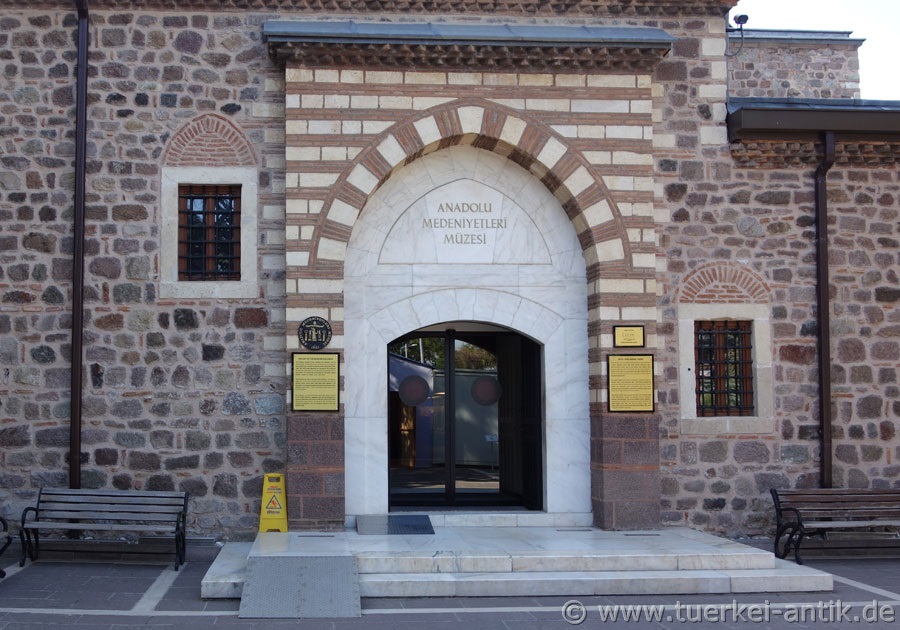 |
|
||
| Anadolu Medeniyetleri Müzesi | |||
|
The Museum of Anatolian Civilizations in Ankara (Turkish: Anadolu Medeniyetleri Müzesi), also known as the Hittite Museum, is the most important archaeological museum in Turkey after the Arkeoloji Müzesi in Istanbul. It is located in the old town of Ankara below the citadel. |
|||
|
|
|||
|
Although originally planned as a central collection site for Hittite testimonies, the museum now displays exhibits from all periods from the Stone Age to the Modern Era. The focus, however, is on the epochs up to the beginning of the first century B.C., with a particular emphasis on the Hittite legacy. |
|||
|
|
|||
|
In the 1930s, Turkey came up with the Turkish historical thesis that Asia Minor had been continuously inhabited by immigrants of Turkish origin since prehistoric times. After Hugo Winckler had identified Boğazköy as Hattua, the capital of the Hittite Empire, Mustafa Kemal suggested the establishment of a Hittite museum that would prove that these too were of Turkish descent. After Hittite was classified as an Indo-European language, the thesis was later abandoned and, at the time of its completion, the museum was dedicated to all Anatolian civilizations, with the emphasis remaining on Hittite. |
|||
|
to the exhibits |
|||
| Photos: @chim | |||
| Translation aid: www.DeepL.com/Translator | |||
| Source: Wikipedia and others | |||
|
|
|||

